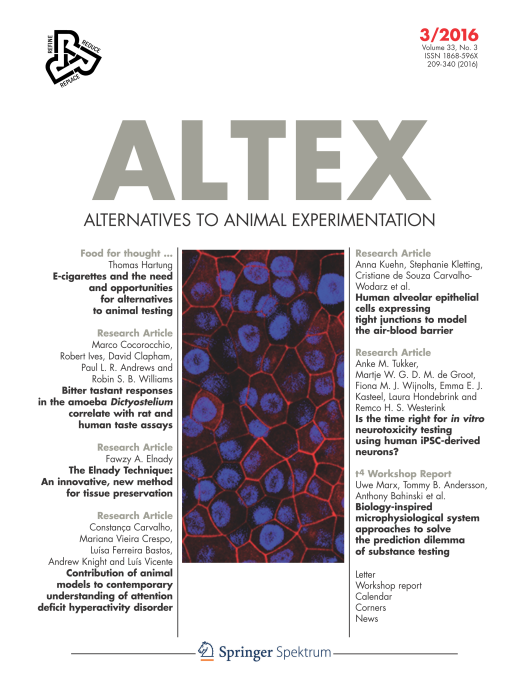E-cigarettes and the need and opportunities for alternatives to animal testing
Main Article Content
Abstract
E-cigarettes have become within only one decade an important commodity, changing the market of the most mass-killing commercial product. While a few years ago estimates suggested that in the course of the 21st century one billion people would die prematurely from tobacco consumption, e-cigarettes continuously gaining popularity promise 10-30fold lower health effects, possibly strongly changing this equation.
However, they still are not a harmless life-style drug. Acceptability simply depends on whether we compare their use to smoking or to not-smoking. In the absence of long-term follow-up health data of users, additional uncertainty comes from the lack of safety data, though this uncertainty likely only is whether they represent 3 or 10% of the risk of their combustible counterpart. This means that there is little doubt that they represent a prime opportunity for smokers to switch, but also that their use by non-smokers should be avoided where possible.
The real safety concerns, however, are that e-cigarettes expose their users to many compounds, contaminants and especially flavors (more than 7,000 according to recent counts), which have mostly not been tested, especially not for long-term inhalation exposure. Neither the precautionary traditional animal testing nor post-marketing surveillance will offer us data of sufficient quality or sufficiently fast to support product development and regulatory decisions. Thus, alternative methods lend themselves to fill this gap, making this new product category a possible engine for new method development and its implementation and validation.
Article Details
Articles are distributed under the terms of the Creative Commons Attribution 4.0 International license (http://creativecommons.org/licenses/by/4.0/), which permits unrestricted use, distribution and reproduction in any medium, provided the original work is appropriately cited (CC-BY). Copyright on any article in ALTEX is retained by the author(s).


